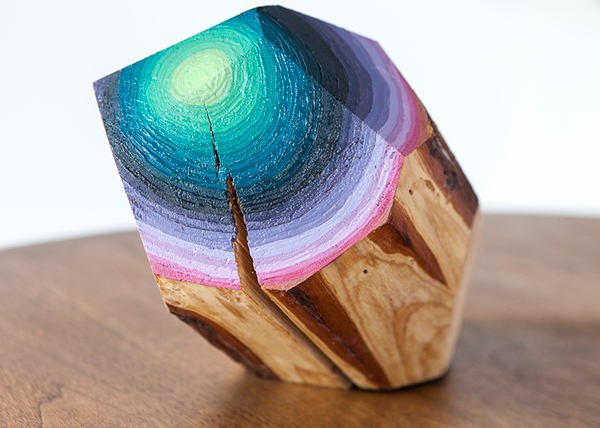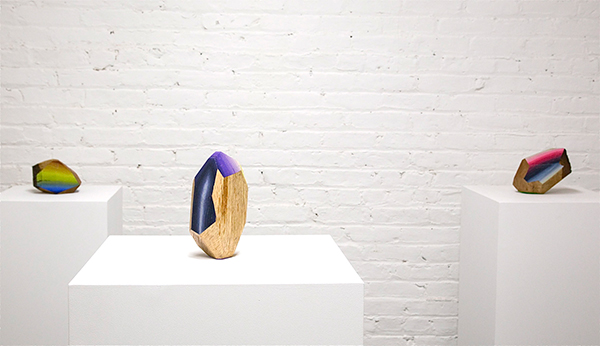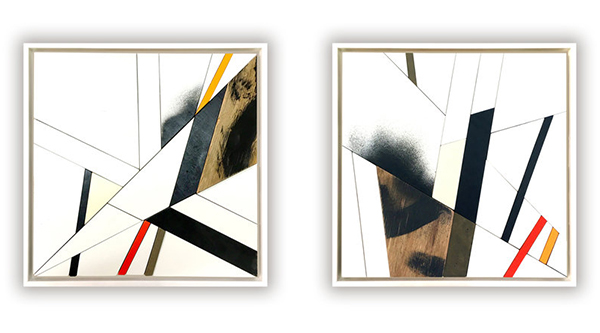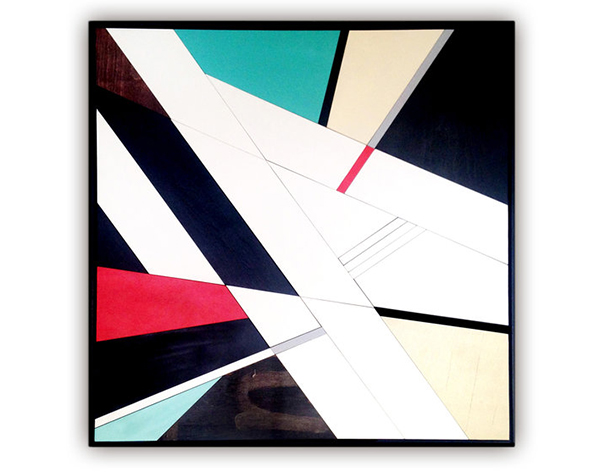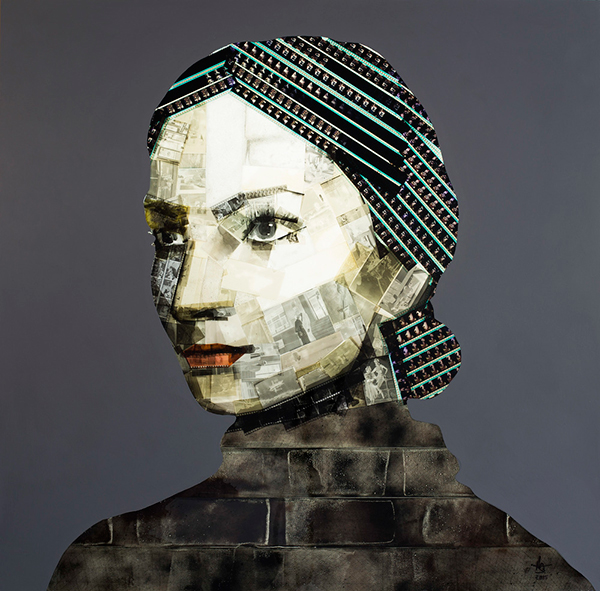
Found objects and materials have long been the medium of choice for famous artists and makers since the 20th-century – Picasso’s Bull’s Head (1942) and Tracey Emin’s My Bed (1998) to name a few. In many cases there is no environmental motive for choosing repurposed materials over paint and clay, even if their reuse of so-called ‘waste’ a seems resourceful approach to making. Below is a selection of beautiful contemporary artworks crafted from pencils, skateboards, waste plastic, salvaged wood, film negatives and books. As you’ll also see in my round up of art installations, repurposed and recycled art know no bounds. Pictured above – Daylight (2015) by Nick Gentry.
Header image: Madrid, martyr capital of a grieving Spain, Le Monde, Saturday April 4, 2020 by Myriam Dion.
Books, Mike Stilkey
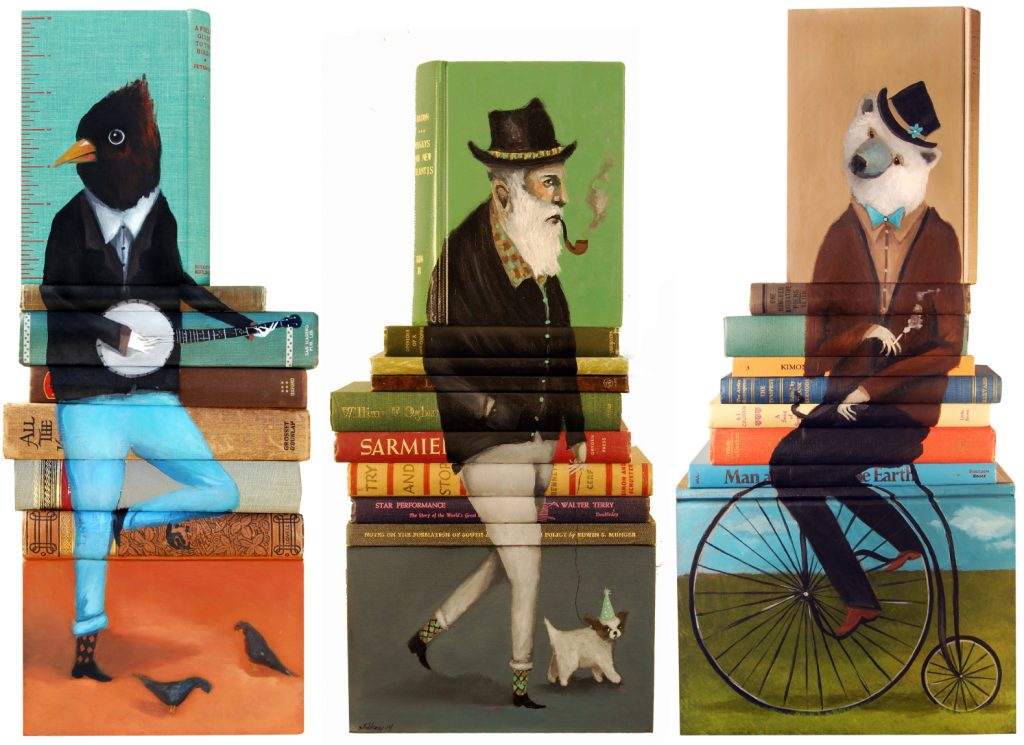
Mike Stilkey creates captivating paintings on discarded books using acrylics, inks, coloured pencil and lacquer. Almost Tim Burton-esque, the distinctive style of the Los Angeles artist features depictions of melancholic characters ‘inhabiting ambiguous spaces and narratives of fantasy and fairy tales’.
Drawn to painting and drawing on vintage paper, record covers, book pages and the books themselves, Stilkey also creates whole installations by painting the spines of stacked books, some of which are up to 24 feet tall. His works are inspired by Weimar Germany Expressionism and his style has been likened to both Edward Gorey to Egon Schiele.
Obsolete media, Nick Gentry
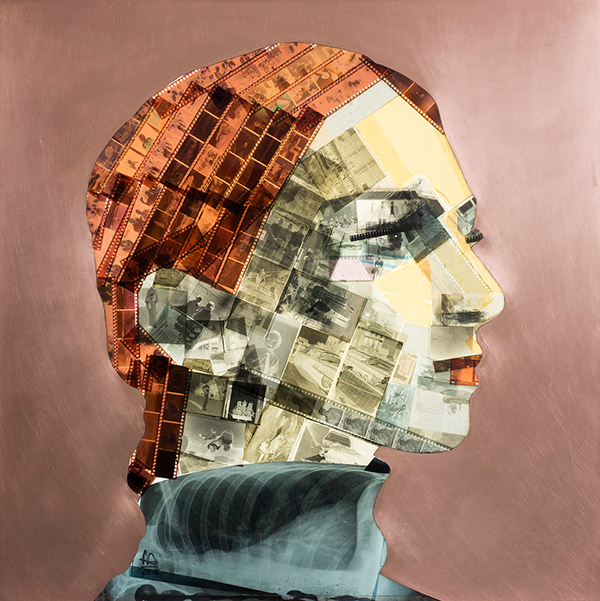
Inspired by the sociological impact of internet culture, Nick Gentry paints beautiful portraits onto obsolete media formats, such as old floppy disks and film negatives, as well as old x-rays. His work is a comment on waste culture, but also makes parallels between the personal info locked beneath the paint and the way in which humankind is becoming so closely integrated with technology.
The work is given an added sense of mystery due to the fact that the personal information is forever preserved beneath the surface of the paint, never to be obtained
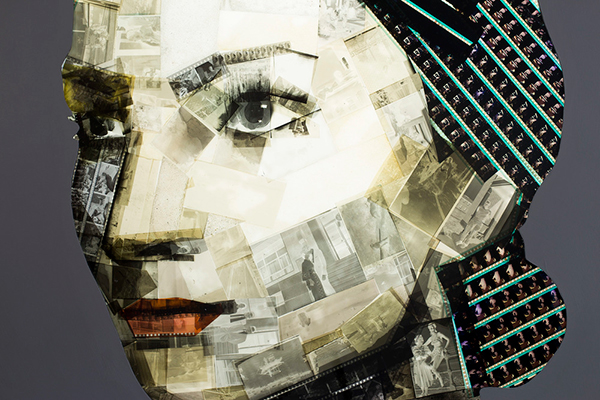
Nick says, “Much of what goes on in the work is about leaving spaces to question identity. I work from photographs and found images so the identities of the subjects remain secret, leaving the disks to become the main focal point. Instead, an identity is constructed from the assembled disks and memories – fragments of a person’s history.”
◼︎◼︎◼︎
Newspapers, Myrium Dion
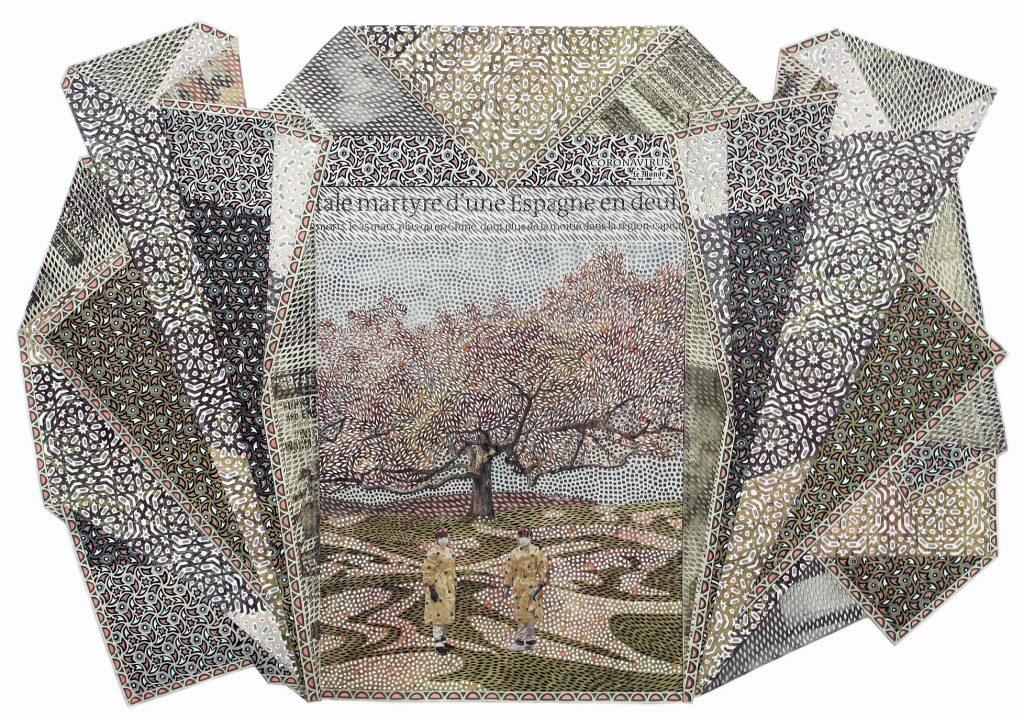
Pictured is Madrid, martyr capital of a grieving Spain, Le Monde, Saturday April 4, 2020. These incredibly fragile works of art by Myriam Dion started out as newspaper pages from international newspapers. The artist uses a scalpel to create intricate cut-outs, drawing inspiration for each lacework patterns from the editorial photographs themselves. Much of each work is made up of negative space, with breathtaking results.
◼︎◼︎◼︎
Waste plastic, Sayaka Ganz
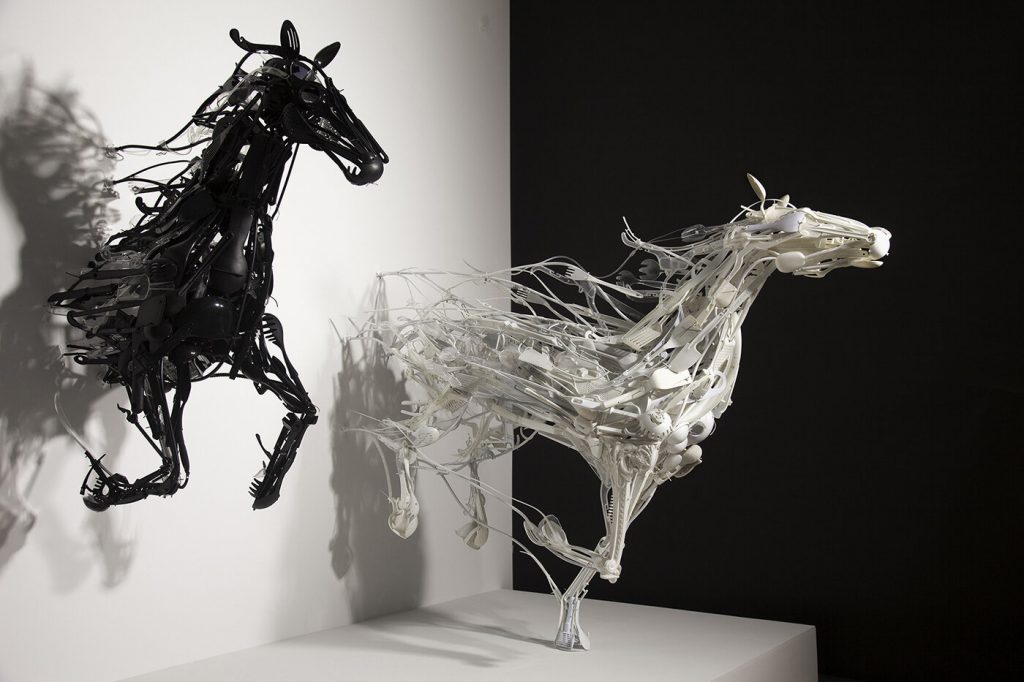
The way in which Sayaka Ganz captures an animal’s movement and gesture through recycled art is truly remarkable. Born in Japan and now living in Fort Wayne, Indiana, the artist’s use of trash as her medium was influenced by Japanese Shinto beliefs that all objects and organisms have spirits and that objects discarded before the end of their usefulness “weep at night inside the trash bin”.

She says “Every piece has its own history and memory, bent, torn and rusted from being used outdoors for a long time. They are lifelike and organic in that sense. Looking at them inspires me and almost instinctively I see, for example, a dog’s head, a bird’s leg, or a deer’s back. Then in response I go and find other pieces that could fit to create the whole animal.”
◼︎◼︎◼︎
Scrap wood, Ron van der Ende

Ron van der Ende creates an awesome play of perspective but because all his bas-relief sculptures are made entirely from salvaged materials. The Dutch artist doesn’t just paint with the materials, he will use one type of material to convey another – recycled wood depicting rusting metal or glass window. Above as shown in Town Bus (2007) below.
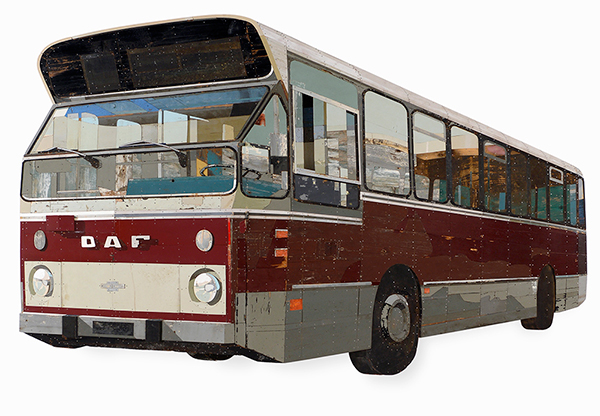
◼︎◼︎◼︎
Vintage haberdashery, Donya Coward
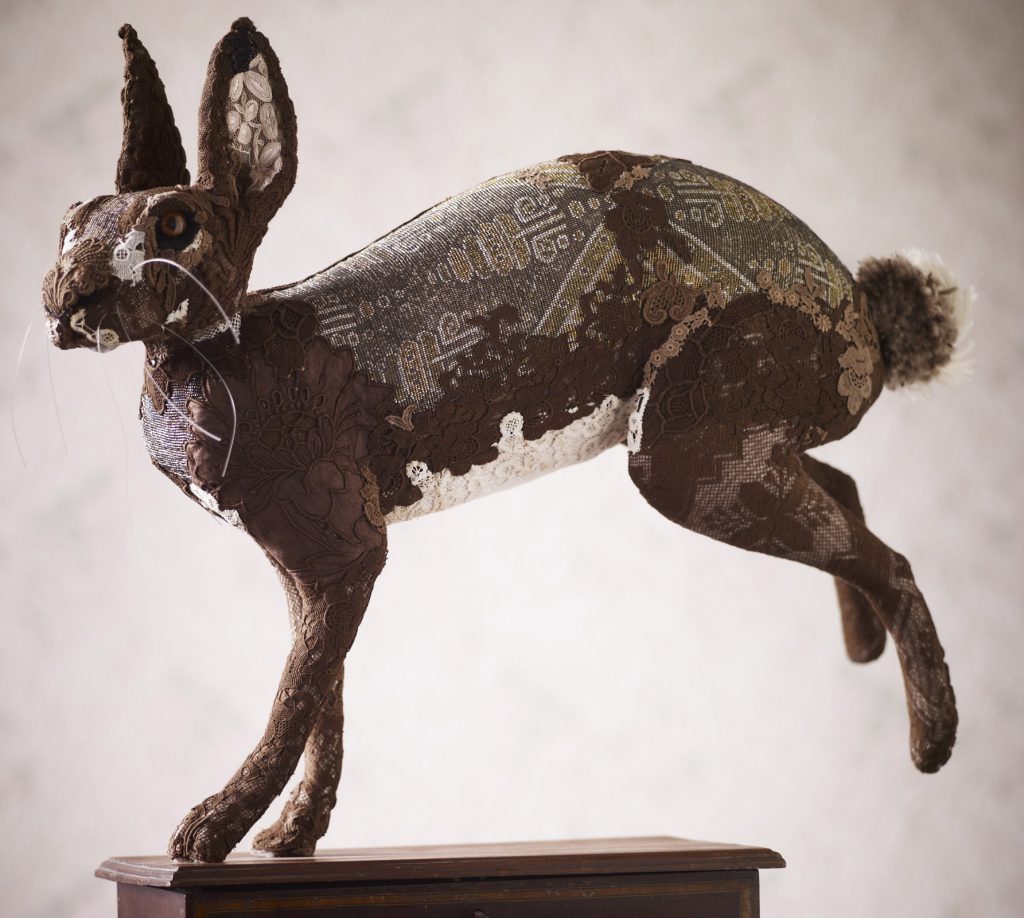
Nottingham artist Donya Coward makes works of art from Victorian antique embroideries, as well as vintage fabrics, haberdashery and laces. As each piece is bespoke and made from one of a kind materials, projects can take up to eight weeks to complete. Preserving materials that would be thrown away is key to her work and she deliberately incorporates the marks and imperfections. Her favourite places for sourcing materials include Newark Antiques Fair, Swinderby, Portabello market and Montreuil in Paris.
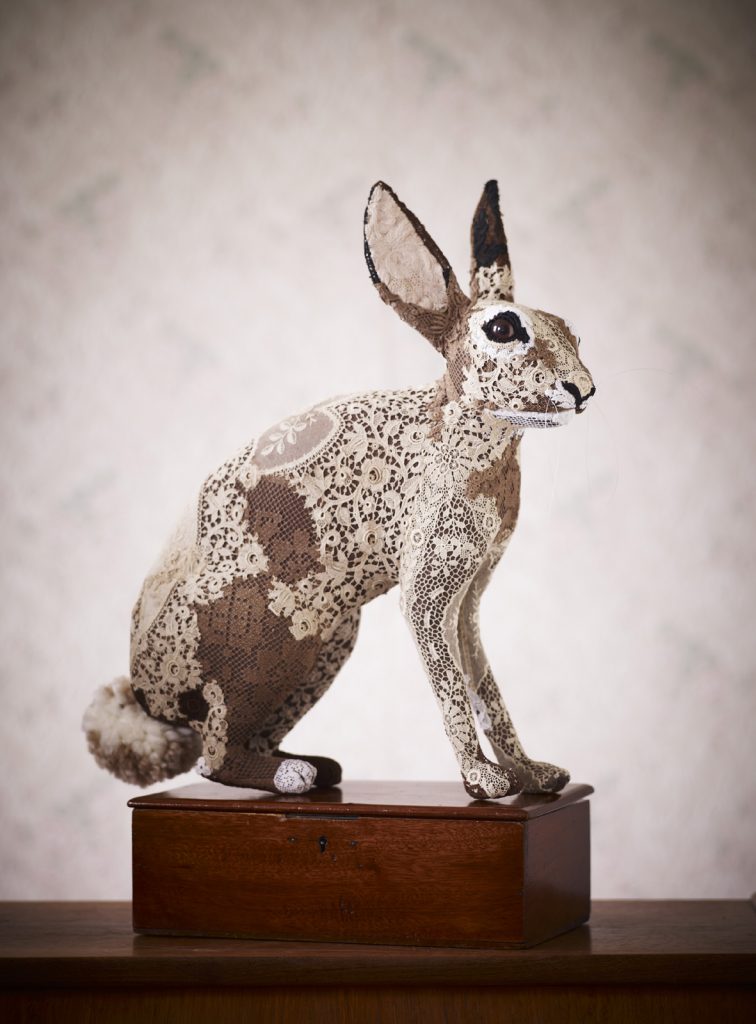
◼︎◼︎◼︎
Skateboards, Haroshi
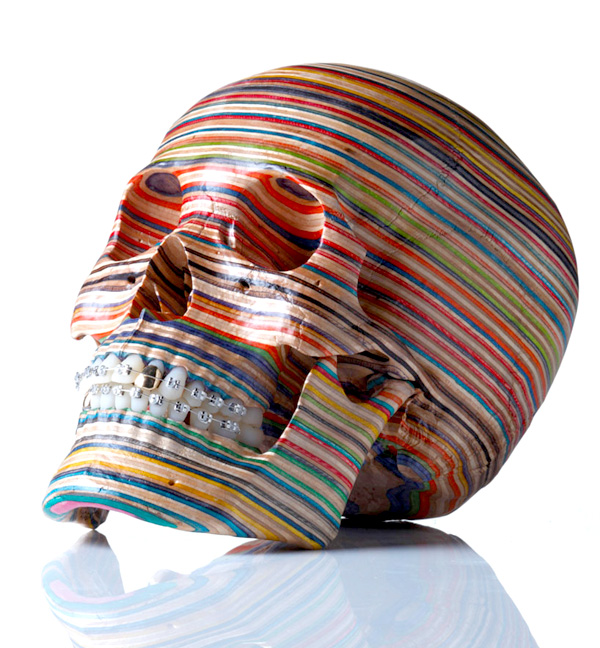
Haroshi is a self-taught sculptor and passionate skateboarder, often faced with the problem of skateboards breaking. Haroshi makes recycled art from the snapped decks whereby wood pieces are put together in mosaic form or stacked in layers.
90% of Buddha sculptures in Japan are traditionally made using a wood mosaic method, in order to make them lightweight. They would also typically contain a crystal ball called Shin-Gachi-Rin (Heart Moon Circle) in place of the Buddha’s heart. Honouring this tradition, buried deep inside each of Haroshi’s sculptures, is a broken skateboard part.
◼︎◼︎◼︎
Pencils, Jasenko Đorđević
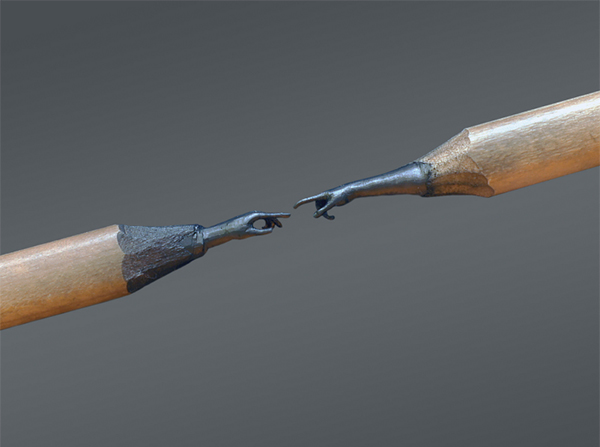
Imagine the patience required to create such intricate carvings? For Bosnian artist Jasenko Đorđević, crafting his sculptures made from pencil lead, fulfils a lifelong passion for all things miniature. During his early years, he would spend hours making things out of the tiniest bits of paper (including a 1.5 x 2.5mm origami boat), ever striving to push his limits.
In 2010 he began working with pencils, and the works are so small, they require a magnifying glass to see them. Đorđević uses an X-acto knife and tiny chisel to sculpt anything from three wise monkeys, to copies of famous artworks such as Edvard Munch’s The Scream. Under the alias ToldART, he chronicles his impressive portfolio of sculptures through photos and videos on Instagram.
◼︎◼︎◼︎
Assembled junk, Zac Freeman
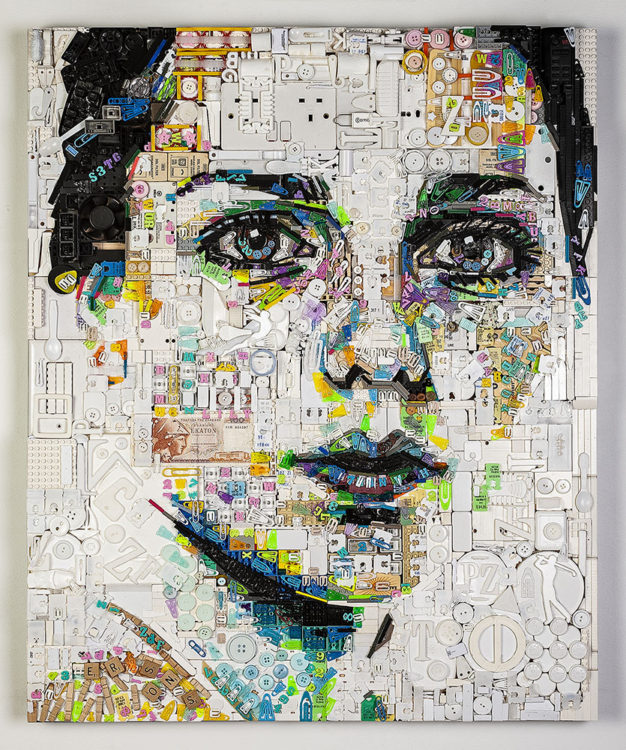
Portraits by Zac Freeman are made of assembled found objects, disposable goods and leftover junk. Each work offers the viewer a realistic portrait from a distance which on closer inspection emerges into a fascinating collection of objects.
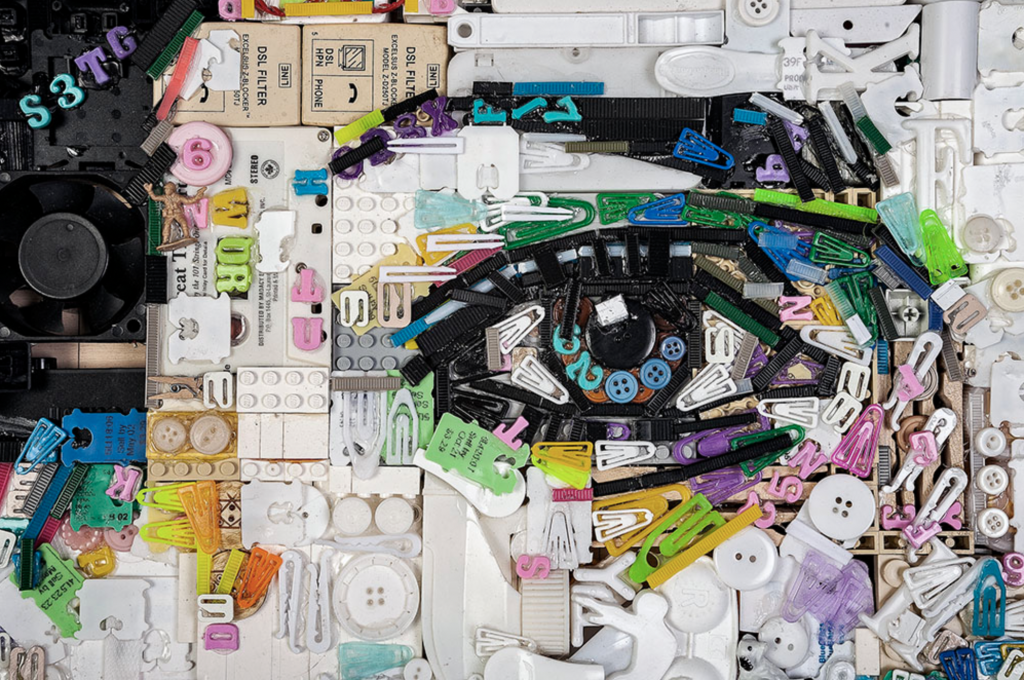
Freeman believes junk has a powerful presence because the items (e.g. grey film canister tops and iPhones) existed in a time and a place. The portraits therefore act as a time capsule reflecting the culture we live in. Pictured above – Lily (2018)
◼︎◼︎◼︎
Salvaged wood, James McNabb

The City Series is a collection of wood sculptures made entirely from scrap wood by Pennsylvania artist James McNabb. Each piece of wood is intuitively cut, something he describes as fast-paced ‘sketching with a band saw’. Together the pieces form a dense metropolis, highlighting issues around the effects of urban sprawl on nature. Pictured above is ‘City Wheel’ made from assorted wood species.
◼︎◼︎◼︎
Shopping Bags, Yuken Teruya
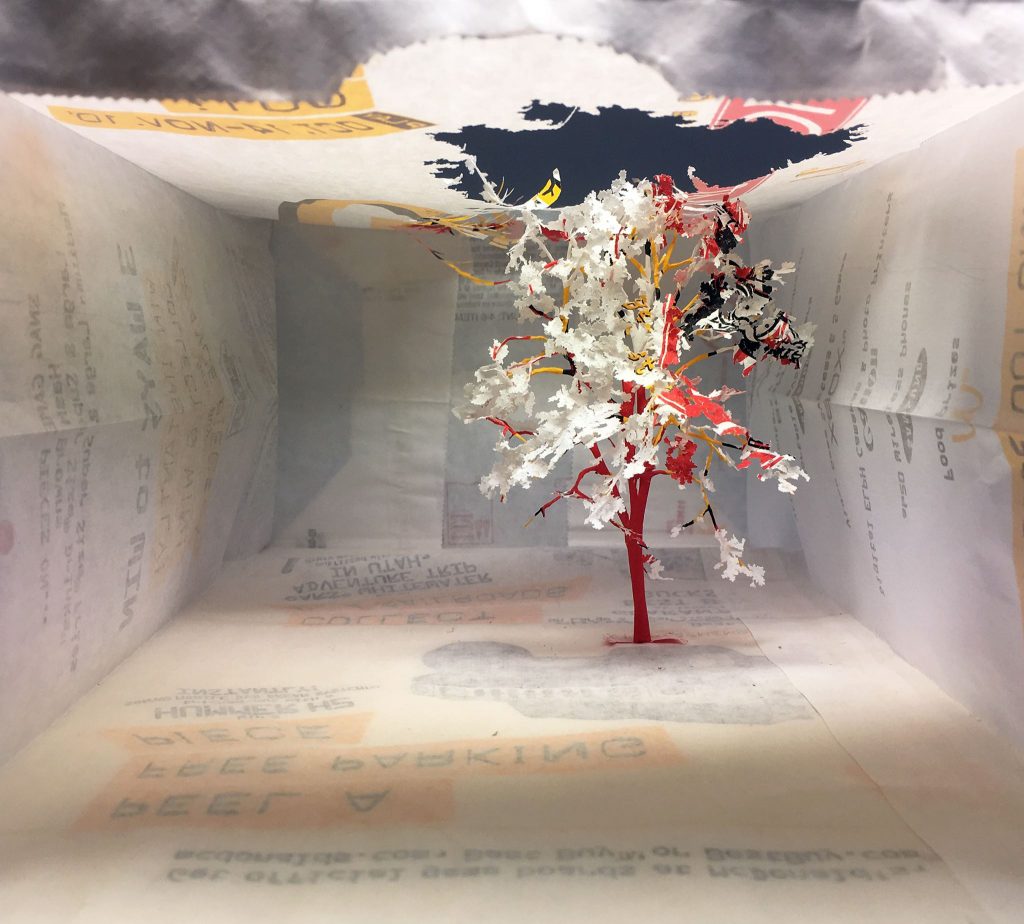
Japanese artist Yuken Teruya carves miniature trees from discarded shopping bags. The trees are part of a series called Notice-Forest. Tacked to the wall, the inside of the Cartier, Tiffany & Co and McDonalds bags become shadow boxes, revealing intricate diorama.
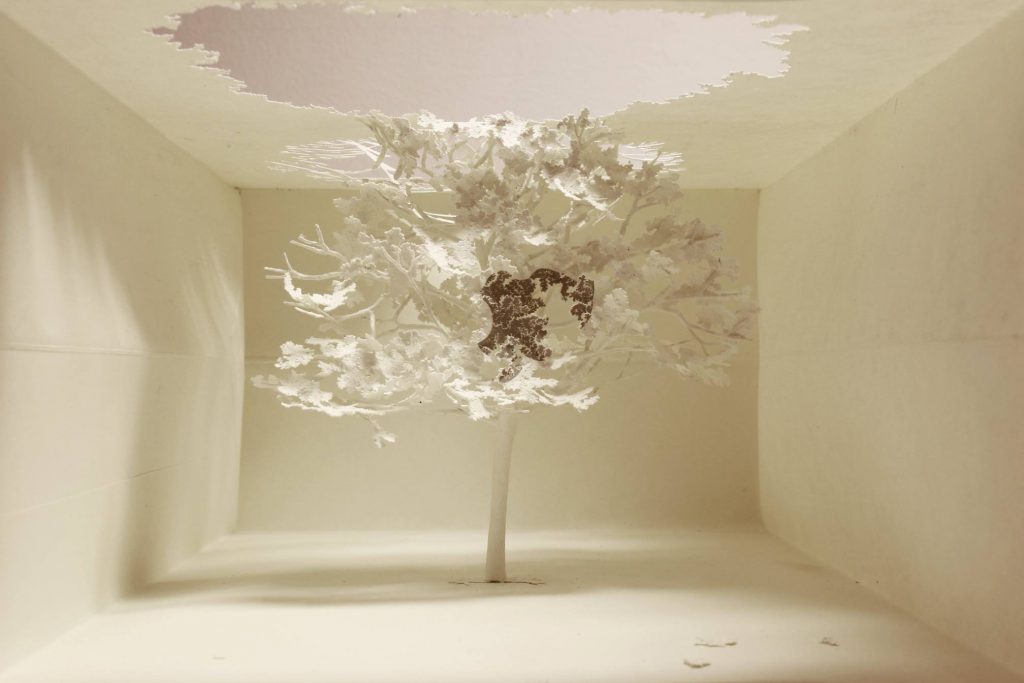
The Saatchi gallery says “In Notice-Forest, the artist subtly draws our attention to the effects of consumerism and globalism — alluding to the depletion of fragile natural resources, the disappearance of cultural traditions and identities, and the distribution of wealth in the new world order.”
◼︎◼︎◼︎
Fallen wood, Victoria Wagner
It was two books, The Golden Bough by Sir James Frazer and The Secret Life of Plants by Peter Tompkins, that made award-winning American artist Victoria Wagner recognise a personal reverence for the trees being downed in the forests surrounding her studio. This is also what first inspired her to make her painted reclaimed wood sculptures called ‘Woodrocks’.
Salvaging chunks of wood, the small jewel-like sculptures are cut to reveal growth-rings, which are then preserved and embossed with gradient spectrums. She says of her work,
My eye generally and naturally tends toward tessellation and pattern, seeking a rhythm that mimics regular pulse. On the one hand, visual order provides a place for the senses to rest, while colour relationships create problems for the brain to solve. I like this simultaneity.
◼︎◼︎◼︎
Waste wood, Mark McClure
Mark McClure is a London-based artist who uses found materials to create what he describes as ‘sensory and physical snapshots of the urban landscapes we have shaped and built up around us’. Using painted waste wood as his medium, he creates recycled art and sculpture that has a dynamic, modern and graphic feel.
Below is a detail of his work entitled ‘Uphoarding’, a series of 10 mosaics that combine to form one 210m long work of art at the Queen Elizabeth Olympic Park in Hackney Wick. The work is made from reclaimed wood, salvaged from the park and surrounding area. McClure also creates one off assemblages using found ephemera, as well as bespoke commissions.
◼︎◼︎◼︎
For more recycled art see the best art installations made from repurposed materials and masters of vintage and recycled paper collage art

